Cartesian parametrization:
Cartesian equation:
Rational quartic.
| next curve | previous curve | 2D curves | 3D curves | surfaces | fractals | polyhedra |
ROSILLO CURVE
| Curve studied by Nicolas Rosillo in 2009. |
Given a circle (C) and two points B and C on one of its diameters (D), the associated Rosillo curve is the locus of the points M such that if P is one of the intersection points between the line perpendicular to (D) passing by M and (C), the lines (BM) and (CP) are parallel.
| If (C) is the circle with centre O and radius a, B(b,0)
and C(c,0) :
Cartesian parametrization: Cartesian equation: Rational quartic. |
| When C is inside the circle, we get a curve with an asymptote (x = c), and a cuspidal point at B if B is on the circle. |
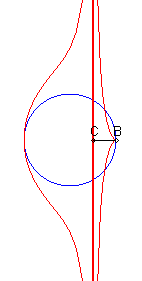 |
| When C is outside the circle, we get a closed curve, with a cuspidal point at B if B is on the circle.
Notice the shape of a heart, a dissymmetrical eight, a tear or of an egg. |
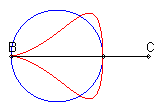 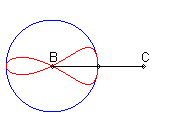
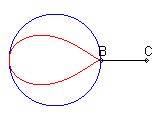 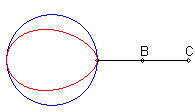 |
| When C is on the centre of the circle (c = 0), we get the conchoids of Nicomedes (pole = B, line = perpendicular to (D) passing by C, modulus = radius of the circle) |
 |
| When C is on the circle, the curve is composed of a line and a cubic, with equation If B is diametrically opposed to C, then we get the cissoid of Diocles and if B is on the centre, we get the right strophoid. |
  |
Compare to the Granville eggs and the kieroids.
Some view of the surfaces of revolution generated by the rotation of a Rosillo curve around its axis.
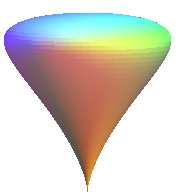 |
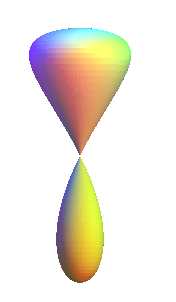 |
 |
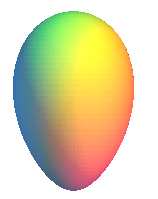 |
| next curve | previous curve | 2D curves | 3D curves | surfaces | fractals | polyhedra |
© Robert FERRÉOL 2017